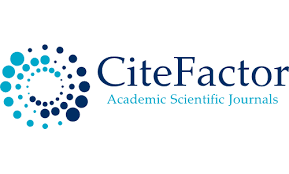Development of aesthetic culture of students in painting classes
Keywords:
painting lessons, aesthetic culture, physical activity, aesthetic educationAbstract
This article describes in detail about the development of aesthetic culture of students in painting classes, the importance of education in the development of aesthetic culture of students, the essence and tasks of the educational process aimed at any goal that develops aesthetic culture of students in painting classes.
References
Jalolov, B. B. The place and role of the influence of education. W016.
Urinova, N. M. and Khuseinova, S. B. Theoretical and practical preparation of future humanities teachers for socially oriented educational work. Bulletin of Science and Practice, 2016.
V. Oripov. Fine art and its teaching methodology. T., "11m Zivo", 2005.
Muhammadiyeva Z. B. HISTORY OF FINE ART IN UZBEKISTAN, ITS TYPES AND GENRES //Theoretical & Applied Science. - 2019. - No. 12. - S. 53-59.
Zarina M., Sabina Q. THE PRACTICAL IMPORTANCE OF TYPES AND GENRES OF FINE ARTS IN HUMAN LIFE //Universum: teknicheskie nauki. – 2021. – no. 11-5 (92). - S. 90-91.
Turayev X. A. et al. Methodical recommendations on the implementation of the theme of forty in drawing lessons graphically //Science and Education. - 2021. - T. 2. – no. 2. - S. 264-268.
Botirovich B. A. FORMATION OF SPATIAL IMAGINATIONS IN STUDENTS //Emergent: Journal of Educational Discoveries and Lifelong Learning. - 2022. - T. 3. – no. 9. - S. 1-3.
Jumanazarovich M. I. THE ROLE OF FINE ART IN THE DEVELOPMENT OF AESTHETIC EDUCATION IN STUDENTS //Emergent: Journal of Educational Discoveries and Lifelong Learning (EJEDL). - 2022. - T. 3. – no. 09. – S. 28-30.
Downloads
Published
Issue
Section
License

This work is licensed under a Creative Commons Attribution-NonCommercial 4.0 International License.
User Rights
Under the Creative Commons Attribution-NonCommercial 4.0 International (CC-BY-NC), the author (s) and users are free to share (copy, distribute and transmit the contribution).
Rights of Authors
Authors retain the following rights:
1. Copyright and other proprietary rights relating to the article, such as patent rights,
2. the right to use the substance of the article in future works, including lectures and books,
3. the right to reproduce the article for own purposes, provided the copies are not offered for sale,
4. the right to self-archive the article.













